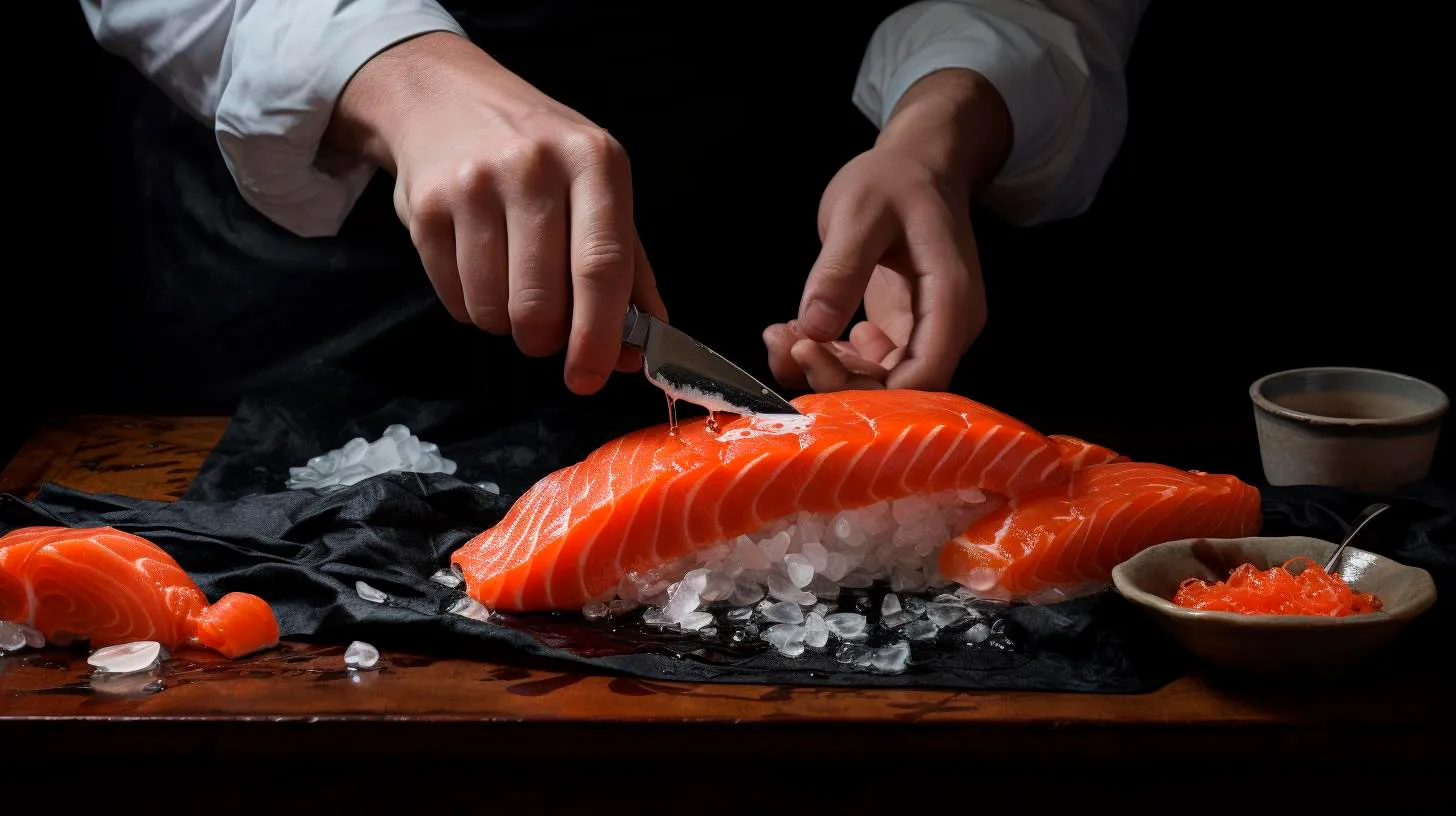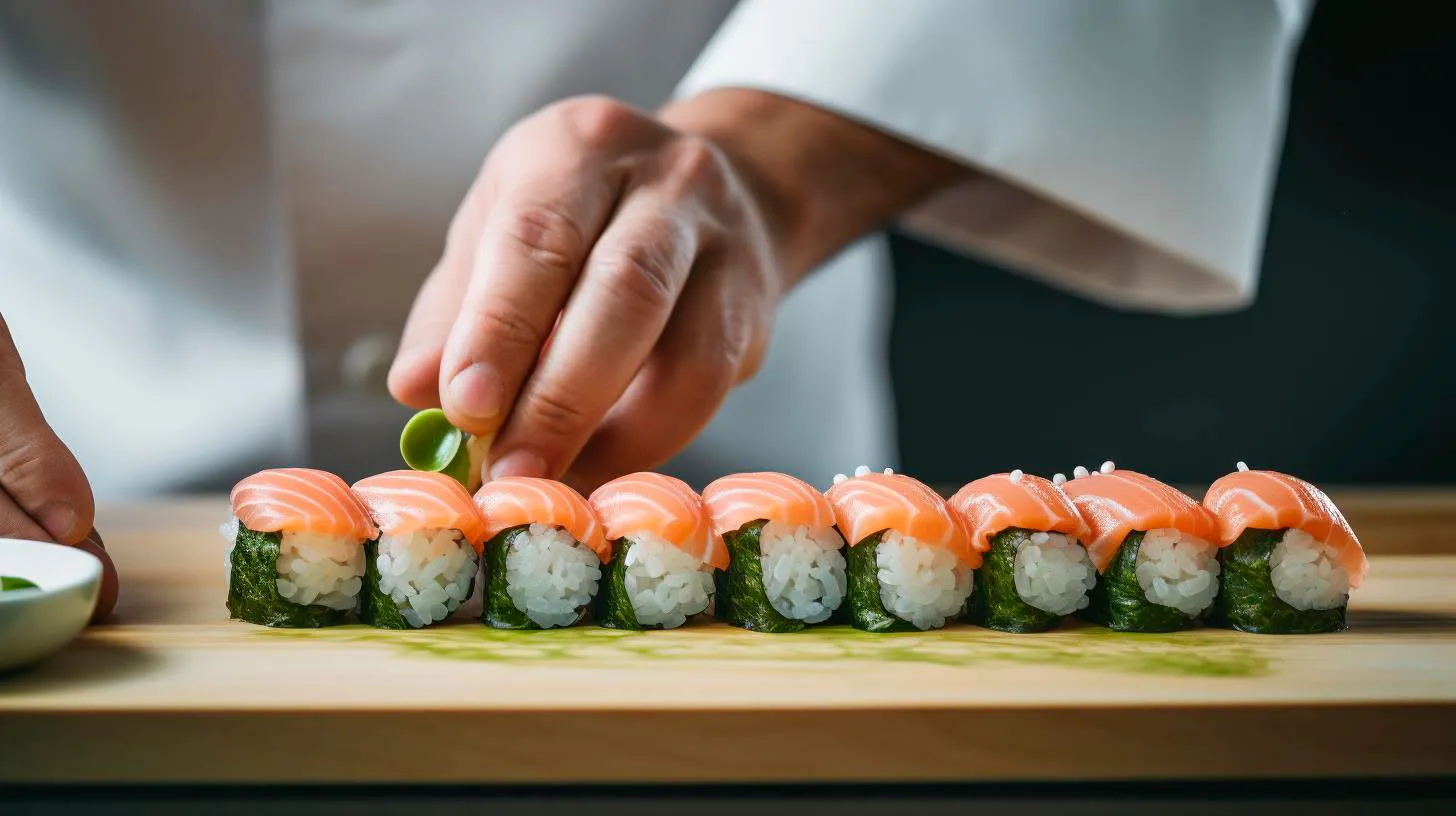The Evolution of Samurai Culture From the Sword to the Chopsticks
The Samurai Legacy
Samurai warriors emerged during the Heian period (794-1185) in Japan. Initially, they served as elite guards, protecting the imperial court and rising to prominence due to their exceptional combat skills and code of conduct. As time went on, the samurai evolved into feudal lords who held considerable power and influence over Japanese society.
The samurai became prominent figures during the Kamakura period (1185-1333), where they were known for their unrivaled skill with the katana sword and their unwavering loyalty to their master, known as daimyo. They lived by the bushido, the samurai’s code of honor, emphasizing virtues such as loyalty, sincerity, and self-discipline.
The Decline of the Samurai
As Japan transitioned into the Edo period (1603-1868), marked by relative peace and stability, the role of the samurai changed significantly. With a reduction in warfare and the central government’s control, the samurai increasingly turned to administrative tasks instead of active combat. This led to a decline in their martial prowess and a shift in their way of life.
The Edo period also brought about a strict social hierarchy known as the four-tiered class system, where the samurai were at the top. However, this hierarchy restricted samurai mobility and led to economic stagnation. Samurai were bound to their feudal lords, relying on them for financial support and land. Many samurai faced adversity during this period, with significant economic hardships and a loss of purpose.
The Meiji Restoration in 1868 marked the end of the samurai era. Japan underwent a series of modernization efforts, embracing Western influence and transitioning into a more centralized government. The samurai class was abolished, and their military privileges were stripped away. Samurai were now required to adopt modern professions and embrace the changing societal norms.
The Evolution of Samurai Culture
Despite the decline of the samurai class, their rich culture and traditions continue to influence modern-day Japan. The evolution of samurai culture can be observed through various aspects of Japanese society, including cuisine, aesthetics, and martial arts.
1. Samurai-Inspired Cuisine
The samurai’s diet was heavily influenced by their warrior lifestyle, with an emphasis on protein-rich foods to maintain strength and stamina. Today, dishes such as sushi and sashimi draw inspiration from samurai culinary traditions. These dishes showcase the importance of fresh ingredients and meticulous preparation, reflecting the samurai’s attention to detail.
Key takeaways:
- Samurai-inspired cuisine focuses on fresh ingredients and meticulous preparation.
- Dishes like sushi and sashimi draw inspiration from samurai culinary traditions.
- Protein-rich foods were essential for the samurai’s strength and stamina.
2. Aesthetics and Minimalism
The concept of minimalism, prevalent in contemporary Japanese design and architecture, can be traced back to the samurai’s appreciation for simplicity and efficiency. Their living spaces, influenced by Zen Buddhism, were characterized by clean lines, functional layouts, and sparse decoration. This aesthetic continues to influence modern Japanese interiors, promoting tranquility and mindfulness.
Key takeaways:
- The samurai’s appreciation for simplicity and efficiency influenced contemporary Japanese design.
- Zen Buddhism played a significant role in shaping the samurai’s minimalist living spaces.
- Modern Japanese interiors prioritize tranquility and mindfulness.
3. Martial Arts and Bushido Philosophy
While the samurai may no longer be active warriors, their martial arts legacy lives on. Martial arts disciplines such as Kendo and Iaido draw inspiration from the samurai’s combat techniques, emphasizing discipline, respect, and mental clarity. Additionally, the bushido philosophy continues to influence martial arts practitioners, promoting personal integrity and self-improvement.
Key takeaways:
- Martial arts like Kendo and Iaido preserve the legacy of the samurai’s combat techniques.
- These disciplines emphasize discipline, respect, and mental clarity.
- Bushido philosophy promotes personal integrity and self-improvement.
From Swords to Chopsticks
As the samurai adapted to changing times, their reliance on the sword diminished, and new cultural practices took hold. One such practice was the use of chopsticks, which symbolized a shift from a warrior to a more refined and cultured society.
Chopsticks became an essential aspect of Japanese cuisine and social etiquette. They embody the values of grace, precision, and mindfulness. The act of using chopsticks requires dexterity and control, mirroring the discipline and skill that samurai warriors once possessed with their swords.
Key takeaways:
- The adoption of chopsticks reflects a shift to a refined and cultured society.
- Chopsticks embody the values of grace, precision, and mindfulness.
- Using chopsticks requires dexterity and control, similar to the skill of samurai with their swords.
In conclusion, the evolution of samurai culture from the sword to the chopsticks highlights the resilience and adaptability of tradition. While the samurai class may have faded into history, their legacy remains embedded in various aspects of Japanese society. Through their cuisine, aesthetics, and martial arts, the samurai’s spirit continues to inspire and captivate.
Sushi: A Culinary Art Form Embedded in Samurai Tradition
In this article, let us delve into the fascinating world of sushi and discover the rich cultural heritage that lies behind this delectable cuisine.
The Historical Origins of Sushi
The history of sushi dates back to 8th-century Japan when the concept of preserving fish was introduced. Back then, fish was fermented with rice, creating a method to enhance its flavor and extend its shelf life. Over time, this process evolved, and the rice started to be consumed along with the fish, marking the birth of sushi as we know it today.
However, it was during the 17th century that sushi truly gained prominence, thanks to the establishment of Edo (now Tokyo) as the capital of Japan. With the rise of the samurai class, sushi became a staple in their diet due to its convenience and nutritional value. Chefs began to experiment with various toppings and fillings, leading to the wide variety of sushi that exists today.
The Art of Sushi Making
Creating sushi is no easy feat; it requires years of training and a keen eye for detail. The craftsmanship involved in sushi making is akin to that of a samurai honing their sword skills. Every step, from selecting the freshest ingredients to perfecting the rice texture, is of utmost importance. Here are some key elements of the sushi-making process:
- Selection of Ingredients: Freshness is paramount in sushi. Chefs meticulously choose the finest seafood, ensuring it meets the highest quality standards. The fish should be of the highest grade, such as tuna, salmon, or yellowtail, which is then expertly sliced to enhance its flavors.
- Preparation of Rice: The rice used in sushi, known as shari, is carefully cooked with the perfect balance of sweetness and vinegar. Each grain should be evenly coated, and the texture should be just right – neither too firm nor too mushy.
- Knife Skills: Sushi chefs possess remarkable knife skills, allowing them to slice fish with precision and finesse. The size and angle of each cut are crucial to ensure the optimal flavor and texture of the fish.
- Presentation: Sushi is not only a feast for the taste buds but also for the eyes. Chefs meticulously arrange each piece on the plate, often incorporating vibrant garnishes and artistic touches to enhance its visual appeal.
The Unique Samurai Connection
Samurai, the noble warriors of ancient Japan, played a significant role in shaping the sushi culture we know today. Here’s how the samurai tradition is embedded in the art of sushi:
- Discipline: Just as samurai adhered to strict codes of conduct, sushi chefs follow a disciplined approach in their craft. Years of training and apprenticeship ensure that each sushi chef masters the skills necessary to create a perfect sushi experience.
- Precision and Attention to Detail: Samurai were known for their precision in battle, and this trait is mirrored in the meticulous preparation of sushi. Every aspect, from the knife cuts to the plating, showcases the chef’s attention to detail.
- Respect for Ingredients: Samurai revered their weapons, treating them with utmost care and respect. Similarly, sushi chefs have deep respect for the ingredients they work with, ensuring every piece of sushi showcases its pristine flavor.
Key Takeaways
Sushi is not merely a meal; it is an intricate art form that brings together culinary expertise and a rich cultural heritage. Here are some key takeaways to remember:
- Sushi originated in Japan and has a fascinating history dating back centuries.
- Sushi making requires precision, attention to detail, and respect for ingredients.
- The samurai tradition influenced the discipline and craftsmanship embedded in sushi making.
- Each piece of sushi is a work of art, carefully crafted to engage the senses.
So, the next time you savor a piece of sushi, take a moment to appreciate the centuries-old tradition that lies within each bite. Let this culinary art form transport you to the world of samurais, where precision, discipline, and respect intertwine on a plate.
Embracing Elegance: Sushi Etiquette in Samurai Dining
In this article, we will delve into the world of sushi etiquette and guide you on how to savor this ancient delicacy like a true samurai. So, let’s embark on this traditional journey and uncover the secrets of sushi etiquette!
1. Mastering the Art of Chopsticks
Chopsticks are an integral part of Japanese dining culture and using them correctly reflects your respect for the cuisine. Here are some key points to remember:
- Hold the chopsticks towards the end, with a loose grip, allowing for delicate and precise movements.
- Do not stab or skewer the sushi with your chopsticks; it is considered impolite. Instead, pick up the sushi gently.
- Never pass food directly from your chopsticks to someone else’s chopsticks. This action resembles a funeral ritual in Japan.
2. Appreciating the Presentation
Japanese culinary arts emphasize the visual aspect of food. Sushi is no exception, and its presentation is a masterpiece in itself. Take a moment to appreciate the aesthetics before indulging:
- Observe the colorful arrangement of the sushi on the plate. The chef meticulously designs each piece to balance colors and textures.
- Before eating, it is customary to express gratitude to the chef by saying “Itadakimasu,” which means “I humbly receive.”
3. Navigating the Soy Sauce
Soy sauce is an essential accompaniment to sushi, but it must be used with care to maintain the delicate flavors. Follow these guidelines:
- Pour a small amount of soy sauce into the shallow dish provided. Do not flood the dish as it shows a lack of refinement.
- Dip the fish part of the sushi into the soy sauce, not the rice. The rice can disintegrate in the sauce, affecting the taste and texture.
- Refrain from mixing wasabi into the soy sauce dish, as it is already placed on the sushi by the chef in precise amounts.
4. Consuming Ginger and Wasabi
Ginger and wasabi accompanying your sushi serve different purposes, and it’s important to use them appropriately:
- Use small portions of pickled ginger as a palate cleanser between different sushi pieces to appreciate each distinct flavor.
- Apply a small amount of wasabi directly on the fish side of the sushi, as the chef has already determined the correct proportion for optimal taste.
5. Savoring Sushi
Eating sushi is the culmination of the dining experience, where you can relish each bite with reverence. Here are some essential techniques to maximize your enjoyment:
- Consume the sushi in one bite, if possible. The chef designs each piece to be enjoyed in a single mouthful.
- Avoid excessive chewing, as it may disrupt the harmony of flavors. Allow the sushi to dissolve gently in your mouth, tasting each ingredient individually.
- Express your satisfaction by complimenting the chef with a simple “Oishi” (delicious) if you truly enjoy the sushi.
Key Takeaways
Sushi etiquette is an art form in itself, designed to honor the culture and craftsmanship behind this revered delicacy. By mastering the art of chopsticks, appreciating the presentation, navigating the soy sauce and condiments, and savoring each bite, you can embrace the elegance of samurai dining. Remember these key takeaways:
- Show respect for the cuisine by using chopsticks correctly and not skewering the sushi.
- Take a moment to admire the presentation before indulging in your sushi.
- Exercise restraint when using soy sauce and avoid mixing wasabi into the dish.
- Use ginger as a palate cleanser and apply the appropriate amount of wasabi provided.
- Savor the sushi by consuming it in one bite and allowing the flavors to harmonize in your mouth.
Embrace the elegance of samurai dining and enjoy this unique cultural experience. By following sushi etiquette, you not only maximize your enjoyment but also pay homage to the rich traditions that have shaped this extraordinary cuisine.
The Samurai Guide to Mastering the Art of Sushi Preparation
Understanding the Basics
Before we dive into the intricate techniques, let’s familiarize ourselves with the fundamental elements that make up a good sushi dish:
- Rice: The foundation of sushi, rice should be short-grain, sticky, and seasoned with a balanced blend of rice vinegar, sugar, and salt.
- Fish: The key ingredient in sushi, fish must be fresh, high-quality, and ideally sourced from sustainable suppliers.
- Nori: The seaweed wrap that holds the sushi together, nori should be crisp and slightly salty.
- Other Ingredients: Sushi can incorporate various fillings such as vegetables, seafood, or even fruits to add texture, flavor, and visual appeal.
The Art of Sushi Preparation
1. Knife Skills: A sushi master’s most prized possession is their knife. The blade must be razor-sharp, enabling precise cuts that accentuate the texture and taste of the ingredients. With a single swift motion, the samurai chef can transform a fish fillet into perfect slices ready to be placed atop a bed of seasoned rice.
2. Perfecting Sushi Rice: Achieving the desired consistency and taste of sushi rice is crucial. The grains must be cooked to perfection – tender, yet firm. The seasoning should enhance the natural flavors without overpowering the ingredients. Balancing the vinegar, sugar, and salt mixture is an art in itself.
3. Composing Nigiri: Nigiri sushi showcases the delicate balance of flavors between the rice and the topping. Using well-moistened hands, the sushi chef molds a small amount of seasoned rice into a finger-like shape. A carefully selected piece of fish or seafood is then placed on top, creating a harmonious blend of taste and texture.
4. Rolling Maki: Maki sushi, the familiar cylindrical rolls, can be enjoyed with various fillings and toppings. To create a perfect roll, the sushi chef places a sheet of nori on a bamboo mat, spreads a thin layer of rice evenly, adds the chosen filling, and then rolls it tightly, sealing the edges with a touch of water. Precision is key to prevent the roll from unraveling.
5. Garnishing and Presentation: Aesthetics play a significant role in sushi preparation. The elegant presentation of sushi adds to the overall dining experience. Sushi chefs often use a variety of garnishes, such as microgreens, edible flowers, and sauces, to make each dish visually appealing.
Key Takeaways
Mastery of sushi preparation requires intense dedication and practice. Here are some key takeaways to aid you on your journey:
- Invest in high-quality knives to ensure precision in slicing.
- Source fresh, sustainable ingredients to guarantee the best flavors.
- Experiment with different fillings and toppings to create unique flavor combinations.
- Pay attention to presentation to enhance the overall dining experience.
Sushi is not just a culinary delight but an art form that expresses both skill and creativity. By adopting the techniques and principles employed by sushi samurais, you too can embark on a path to becoming a sushi master. So gather your ingredients, hone your knife skills, and embrace the way of the samurai to create exquisite sushi masterpieces.



